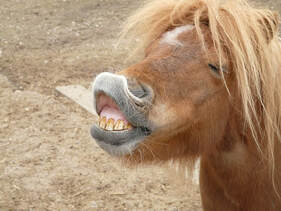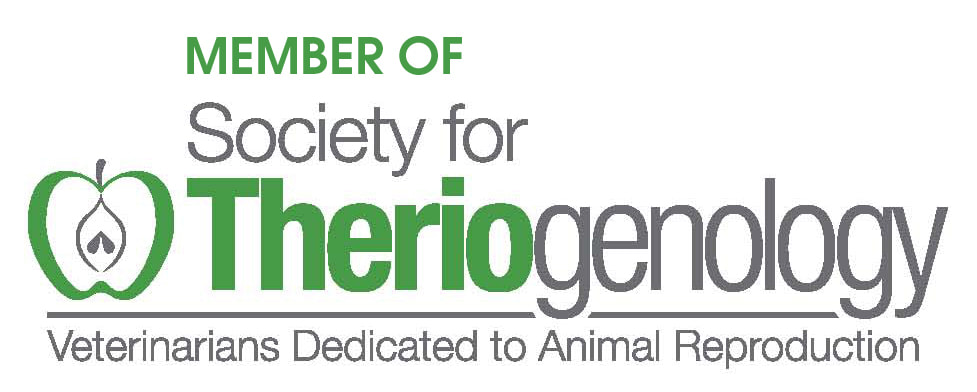
We believe in the importance of dentistry in the well-being of the horse. The traditional term for removing sharp enamel points from the teeth is "floating." The more modern term is "equilibration." This implies that the mouth is filed to remove sharp points and also any overgrown teeth. The upper and lower teeth should be able to slide over each other in a front to back and side to side direction. This will allow the horse to grind its feed more easily. It will also prevent the formation of sores in the soft tissues of the mouth and make the horse more comfortable in the bit.
You have probably heard the term "bit seats". This implies that the front cheek teeth (premolars) are rounded so they do not cause pain when the bit is applied to the mouth.
Young horses will benefit from dental equilibration prior to being bitted for the first time. In fact, we strongly advise it. Many people prefer to remove the wolf teeth at this time. These are small teeth just in front of the cheek teeth and may cause pain when the bit is applied.
How often? The mouth can change quite rapidly in horses between two and a half and five years of age. Baby teeth are being shed and adult teeth come in to replace them. Horses may need dental attention several times per year or more during this time. After that, most horses will survive with a yearly dental exam and many will need work at that time.
If your horse seems uncomfortable in the bit, have the mouth examined. Many times we just run our fingers over the front cheek teeth and if they are smooth, we figure things are ok. Any of the cheek teeth can have sharp points and cause pain when you pull on the bit. So we need to check the whole mouth if you are having problems.
What about these crazy motorized tools? Traditionally, equilibration was done with hand files, and we’ve done our share of work with them. You can do justice to a mouth that doesn’t have too much wrong with it with hand files. From our standpoint, nobody much saws a two by four in half with a hand saw anymore and we don’t use hand floats much anymore. To do a good dental, we need to tranquilize the horse, open the mouth with a speculum, and work in the mouth with motorized tools. In trained hands, this is much easier on the mouth than the hand files. You can see what you’re doing and work on the teeth, not thrash the soft tissues.
We have performed over 3,000 dental equilibrations. We are equipped to perform full-motorized dentistry. We use proper tranquilization of the patient and do not expect to cause the horse unnecessary pain.
You have probably heard the term "bit seats". This implies that the front cheek teeth (premolars) are rounded so they do not cause pain when the bit is applied to the mouth.
Young horses will benefit from dental equilibration prior to being bitted for the first time. In fact, we strongly advise it. Many people prefer to remove the wolf teeth at this time. These are small teeth just in front of the cheek teeth and may cause pain when the bit is applied.
How often? The mouth can change quite rapidly in horses between two and a half and five years of age. Baby teeth are being shed and adult teeth come in to replace them. Horses may need dental attention several times per year or more during this time. After that, most horses will survive with a yearly dental exam and many will need work at that time.
If your horse seems uncomfortable in the bit, have the mouth examined. Many times we just run our fingers over the front cheek teeth and if they are smooth, we figure things are ok. Any of the cheek teeth can have sharp points and cause pain when you pull on the bit. So we need to check the whole mouth if you are having problems.
What about these crazy motorized tools? Traditionally, equilibration was done with hand files, and we’ve done our share of work with them. You can do justice to a mouth that doesn’t have too much wrong with it with hand files. From our standpoint, nobody much saws a two by four in half with a hand saw anymore and we don’t use hand floats much anymore. To do a good dental, we need to tranquilize the horse, open the mouth with a speculum, and work in the mouth with motorized tools. In trained hands, this is much easier on the mouth than the hand files. You can see what you’re doing and work on the teeth, not thrash the soft tissues.
We have performed over 3,000 dental equilibrations. We are equipped to perform full-motorized dentistry. We use proper tranquilization of the patient and do not expect to cause the horse unnecessary pain.


